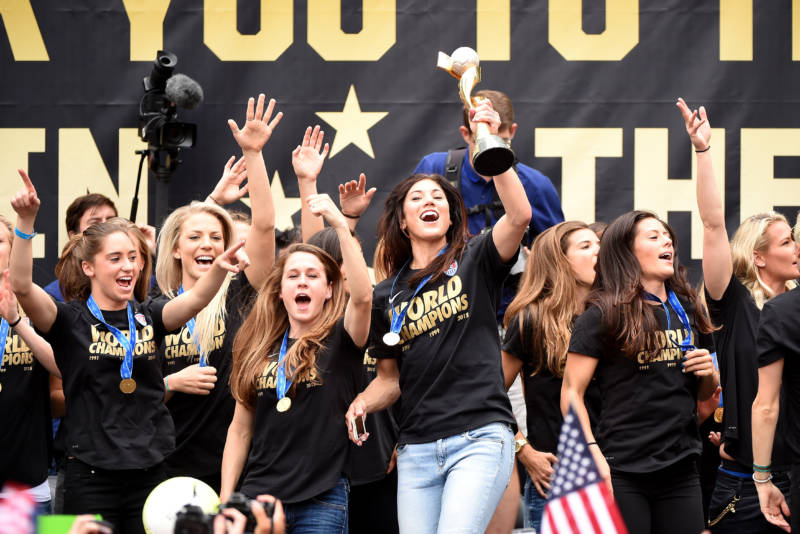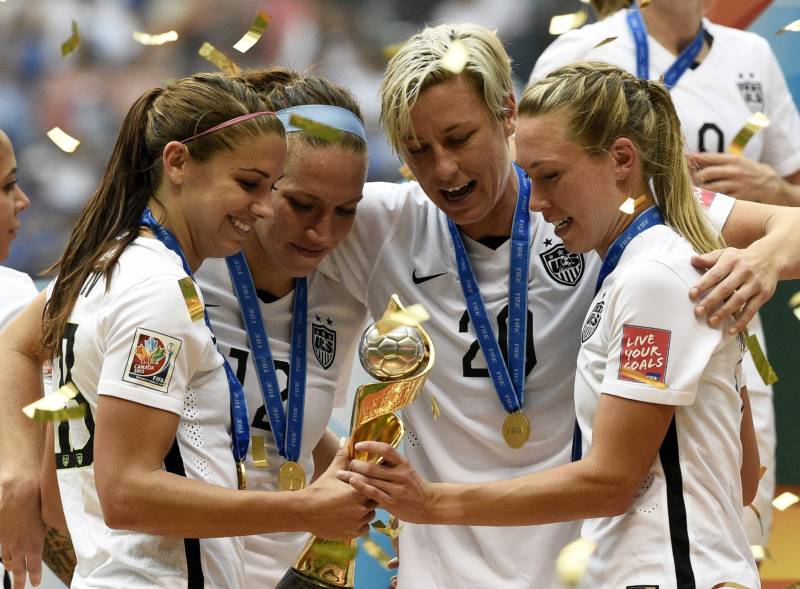Last Friday, citing the Equal Pay Act and Title VII of the Civil Right's Act, the US women's soccer team filed an "institutionalized gender discrimination" lawsuit against the US Soccer Federation—and with good reason. Not only is the women's soccer team paid much less than the men's team, they are also not provided with the same standards when it comes to coaching, medical attention and pitch quality. (The men play on real grass, while the women's team is consistently provided with artificial turf, which causes burns. The women have been objecting to this double standard for years, including a 2014 lawsuit against FIFA.)
Arguments have consistently been made that women don't deserve equal pay in soccer because the men's team generates more money. In a 2015 article titled "Equal Pay For Women World Cup Players? Seriously?" NBC Sports cited figures from 2011, when "the Women's World Cup brought in almost $73 million [and] the 2010 Men's World Cup in South Africa made almost $4 billion." But these figures don't reflect what has happened in the years since. According to the New York Times, in 2016, the US women’s national team brought in a profit of $6.6 million, while the men's team managed only $2 million. What's more, between 2012 and 2016, the women played significantly more games (sometimes as much as 50 percent more) and earned twice as many wins as their male counterparts.
Even if you ignore the boom in popularity of women's soccer in the last few years, it's impossible to fathom why male players are paid $75 a day for expenses, while female players receive only $60, or why male players make $3,750 for sponsored appearances, while the female players receive $3,000. At its core, this lawsuit has the potential to be as important for the future of women's soccer as Billie Jean King's legendary fight for equal prize money in tennis was.
Even if the lawsuit is successful though, there is still a major stumbling block standing in the way of female athletic progress: sports media. Despite the fact that women make up 40 percent of all sports participants, female athletes receive only three to four percent of media coverage, with industry giants like ESPN and Fox Sports granting them a paltry one to two percent of air time. According to 2015 research, women's sports received less TV coverage this decade than they did in the '80s. It doesn't help that in 2014, less than five percent of sports anchors were women.



